
How to Use Adafruit MAX98306 Stereo 3.7W Class D Audio Amplifier: Examples, Pinouts, and Specs
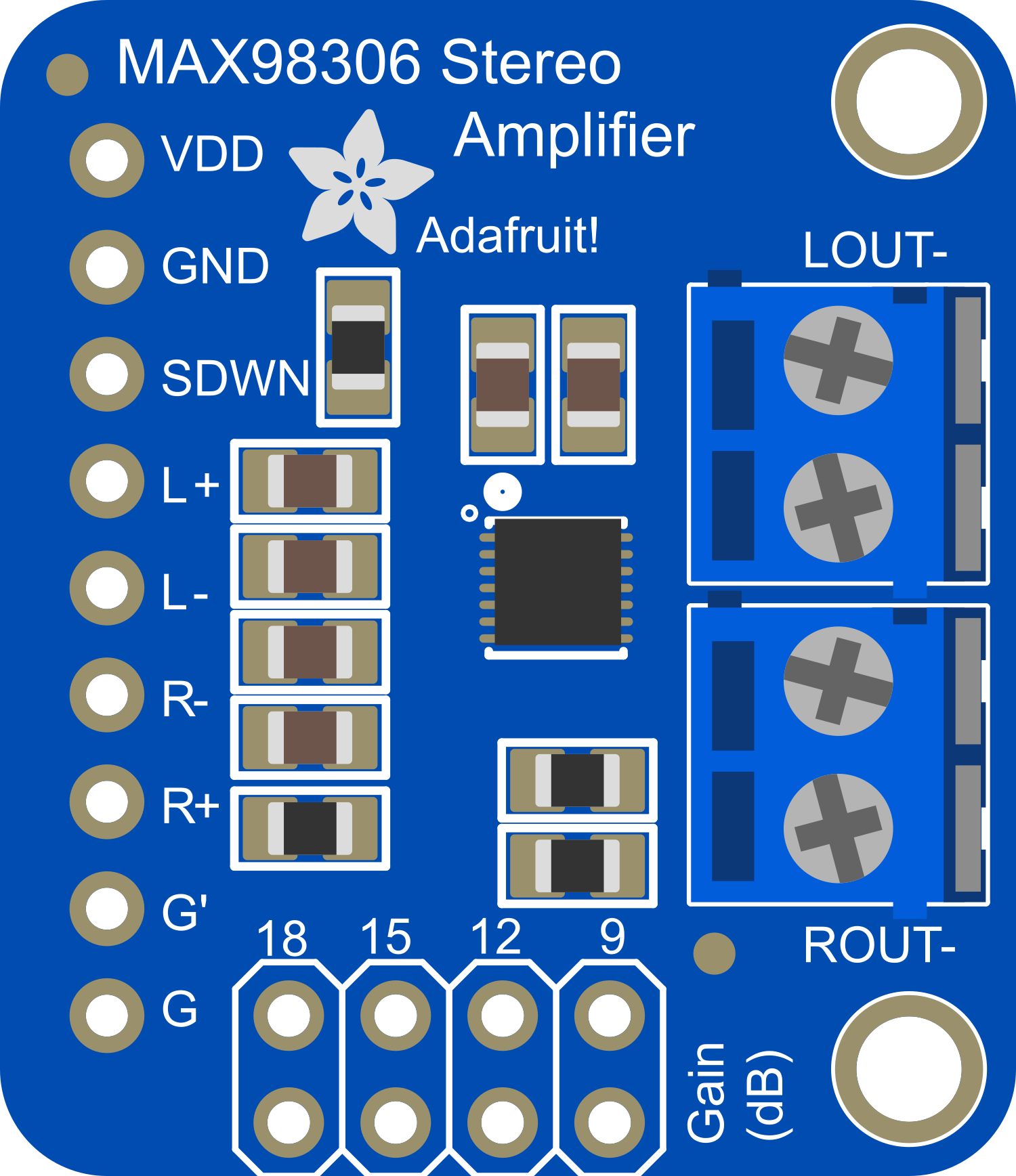
 Design with Adafruit MAX98306 Stereo 3.7W Class D Audio Amplifier in Cirkit Designer
Design with Adafruit MAX98306 Stereo 3.7W Class D Audio Amplifier in Cirkit DesignerIntroduction
The Adafruit MAX98306 is a compact and efficient stereo audio amplifier that utilizes Class D amplification technology. It is designed to deliver high-quality sound with minimal distortion and can provide up to 3.7 watts of power per channel. This makes it an ideal choice for portable and battery-powered projects where size and power efficiency are critical. Common applications include DIY speakers, portable audio players, and any project requiring amplified sound.
Explore Projects Built with Adafruit MAX98306 Stereo 3.7W Class D Audio Amplifier
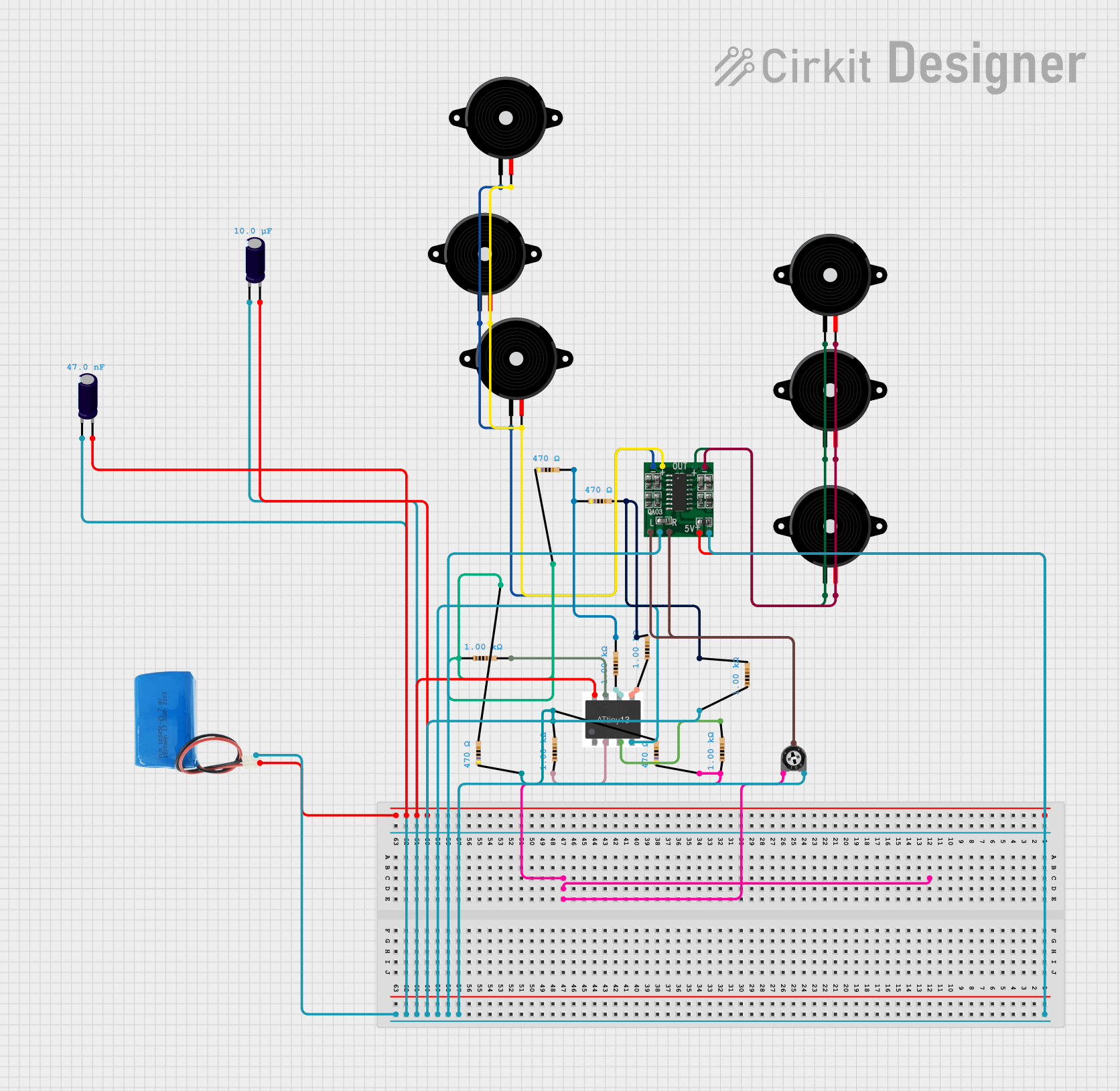
 Open Project in Cirkit Designer
Open Project in Cirkit Designer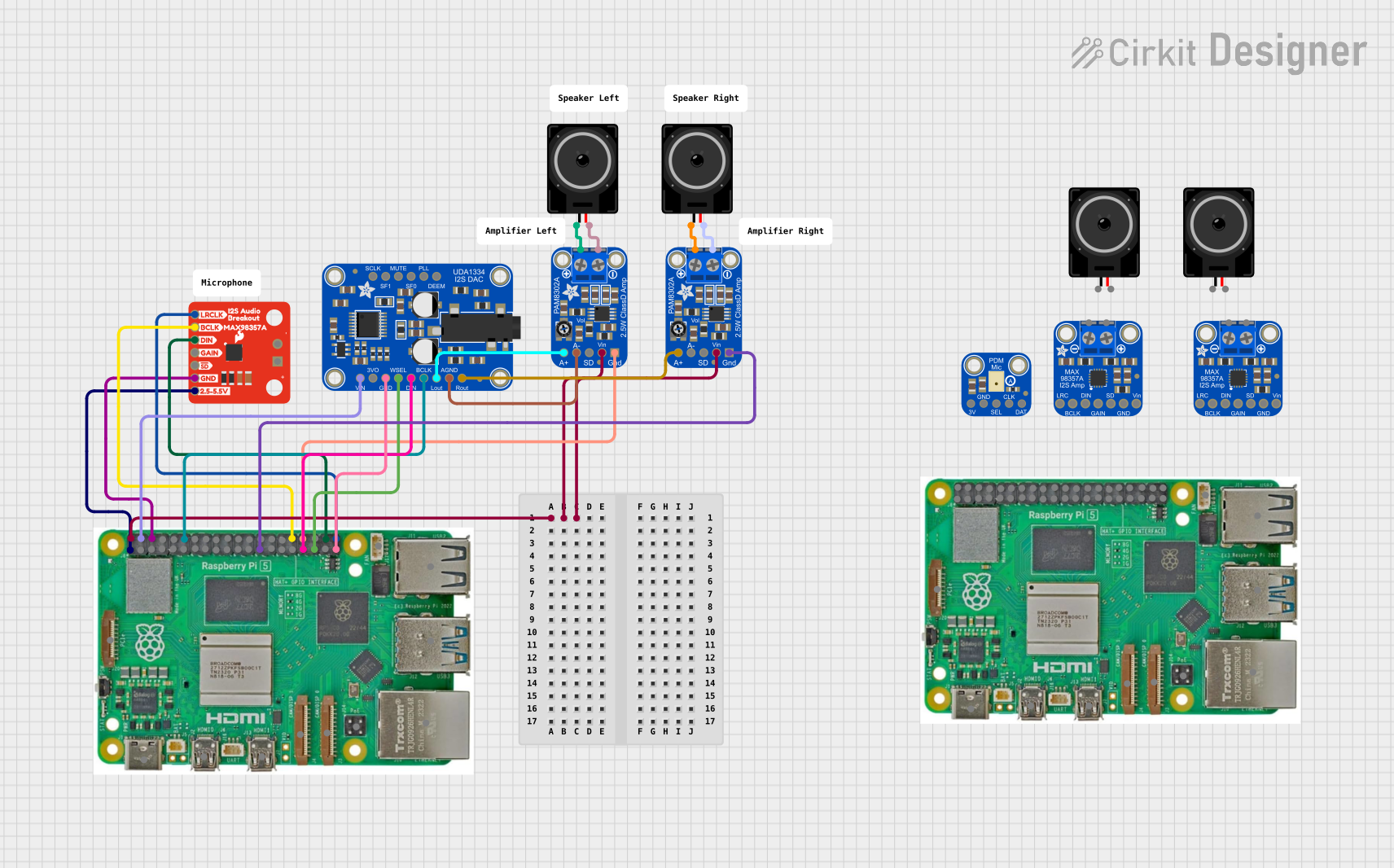
 Open Project in Cirkit Designer
Open Project in Cirkit Designer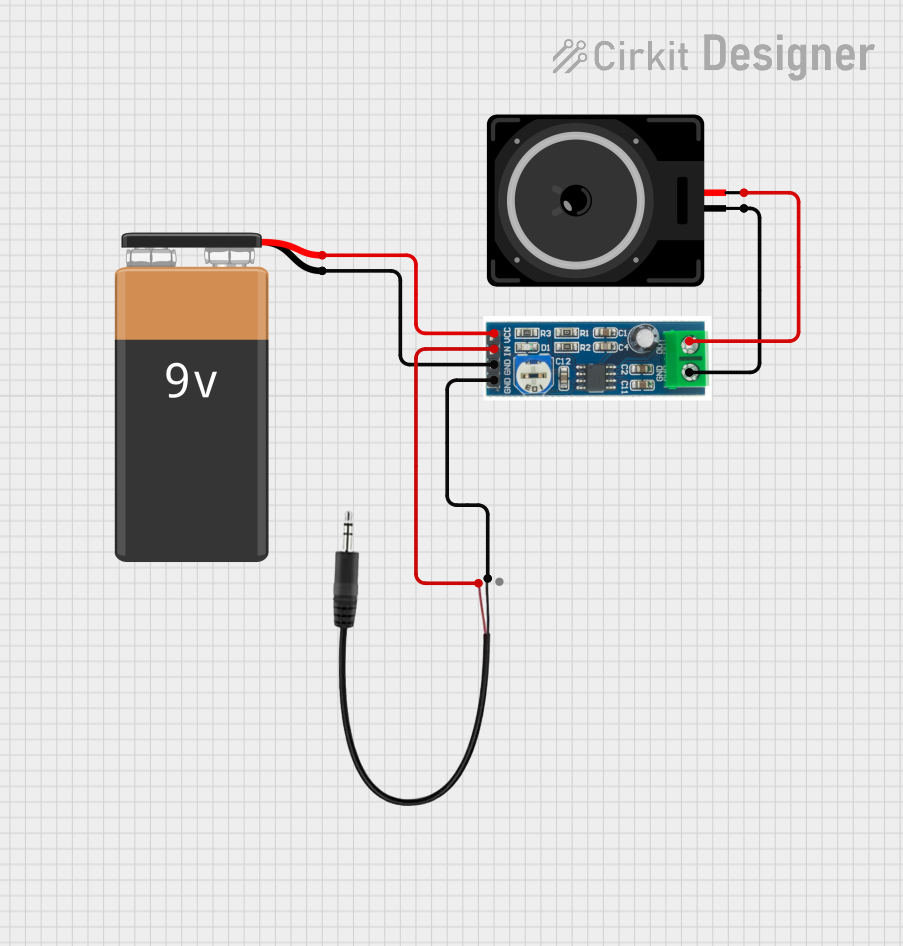
 Open Project in Cirkit Designer
Open Project in Cirkit Designer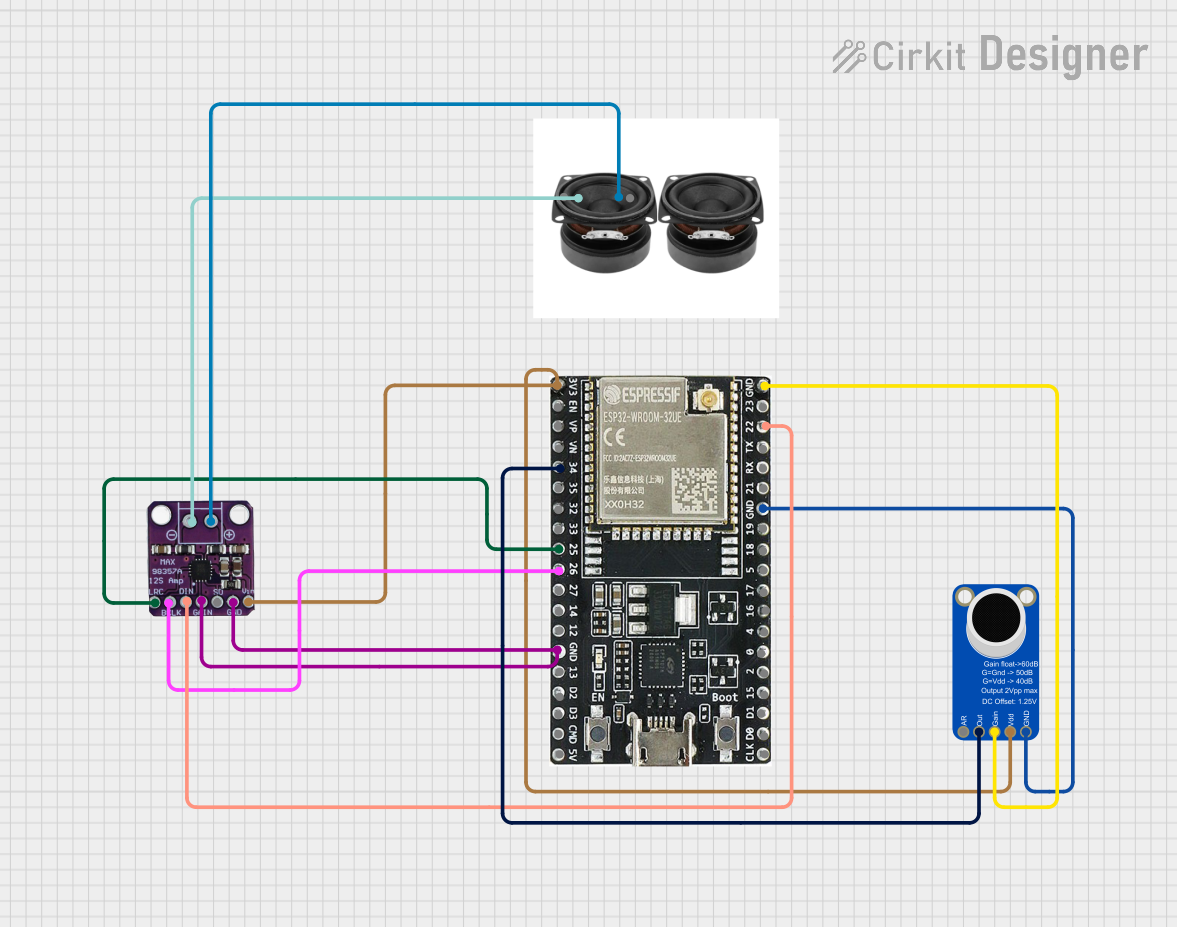
 Open Project in Cirkit Designer
Open Project in Cirkit DesignerExplore Projects Built with Adafruit MAX98306 Stereo 3.7W Class D Audio Amplifier

 Open Project in Cirkit Designer
Open Project in Cirkit Designer
 Open Project in Cirkit Designer
Open Project in Cirkit Designer
 Open Project in Cirkit Designer
Open Project in Cirkit Designer
 Open Project in Cirkit Designer
Open Project in Cirkit DesignerTechnical Specifications
Key Features
- Output Power: Up to 3.7W per channel at 3Ω
- Power Supply Voltage: 3.7V to 5.5V
- Efficiency: Over 90% when driving 8Ω speakers
- PSRR: -77dB at 217Hz
- THD+N: 0.2% at 1W
- SNR: 90dB typical
- Shutdown Current: 0.7µA
Pin Configuration and Descriptions
| Pin Number | Name | Description |
|---|---|---|
| 1 | L+ | Left channel positive output |
| 2 | L- | Left channel negative output |
| 3 | R+ | Right channel positive output |
| 4 | R- | Right channel negative output |
| 5 | VDD | Power supply voltage (3.7V to 5.5V) |
| 6 | GND | Ground |
| 7 | INL | Left channel audio input |
| 8 | INR | Right channel audio input |
| 9 | GAIN | Gain selection input |
| 10 | SD | Shutdown control input (active low) |
Usage Instructions
Connecting to a Circuit
- Connect the power supply to the VDD pin and ground to the GND pin.
- Attach your audio input source to the INL and INR pins for left and right channels, respectively.
- Connect your speakers to the L+ and L- for the left channel, and R+ and R- for the right channel.
- Optionally, you can control the gain by connecting the GAIN pin to different voltage levels.
- The SD pin can be connected to a microcontroller or switch to enable or disable the amplifier.
Best Practices
- Use a clean power supply to minimize noise.
- Keep audio input lines as short as possible to reduce interference.
- Ensure that speakers are compatible with the amplifier's power output to avoid damage.
- Avoid running the amplifier at maximum volume for extended periods to prevent overheating.
Example Code for Arduino UNO
// Example code to control the Adafruit MAX98306 with an Arduino UNO
const int shutdownPin = 2; // Connect to the SD pin of the amplifier
void setup() {
pinMode(shutdownPin, OUTPUT);
// Start the amplifier
digitalWrite(shutdownPin, LOW);
}
void loop() {
// Your audio processing code goes here
// To shutdown the amplifier, set the shutdownPin HIGH
// To restart the amplifier, set the shutdownPin LOW
}
Troubleshooting and FAQs
Common Issues
- No Sound: Ensure that the power supply is connected properly and the SD pin is set to LOW.
- Distorted Sound: Check if the speakers are rated for the output power and the audio input is not too high.
- Intermittent Sound: Verify that all connections are secure and there is no loose wiring.
Solutions and Tips
- If you experience noise in the audio, try using a shorter cable for the audio input.
- Make sure the power supply can deliver sufficient current for the amplifier.
- Use a heatsink if the amplifier is getting too warm during operation.
FAQs
Q: Can I use this amplifier with 4Ω speakers? A: Yes, but the output power will be lower than with 3Ω speakers.
Q: What should I do if the amplifier gets too hot? A: Ensure adequate ventilation and consider adding a heatsink to dissipate heat.
Q: Can I chain two of these amplifiers for more power? A: No, chaining amplifiers is not recommended as it can lead to damage and distortion.